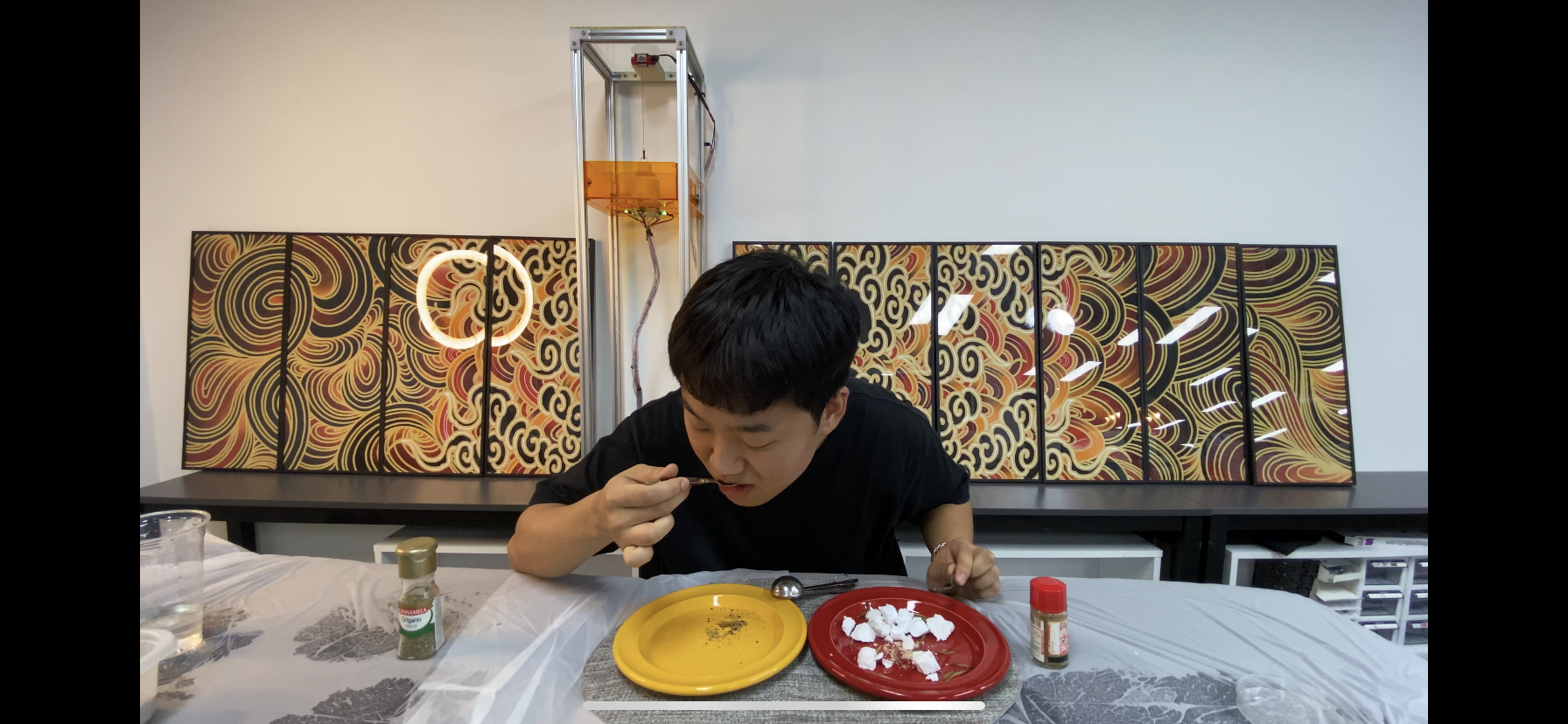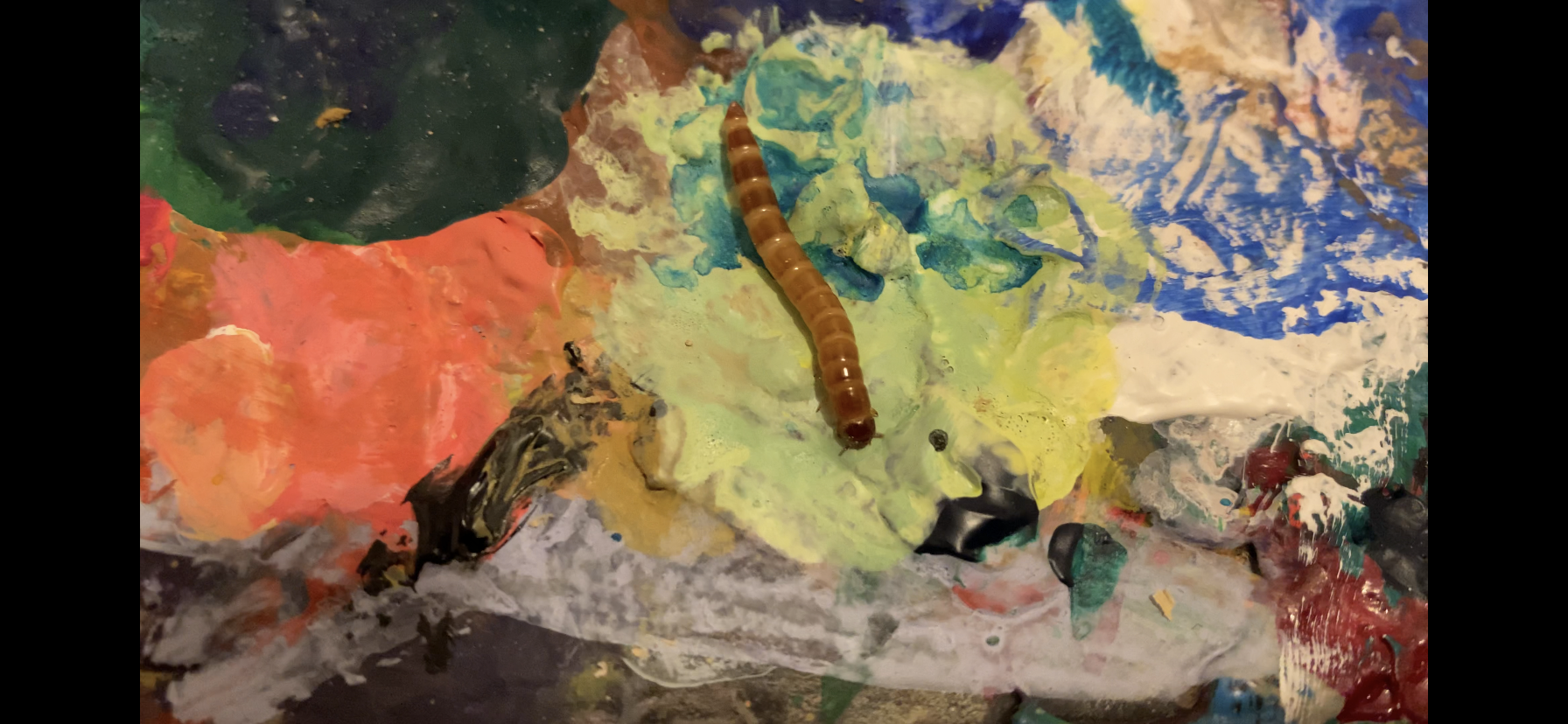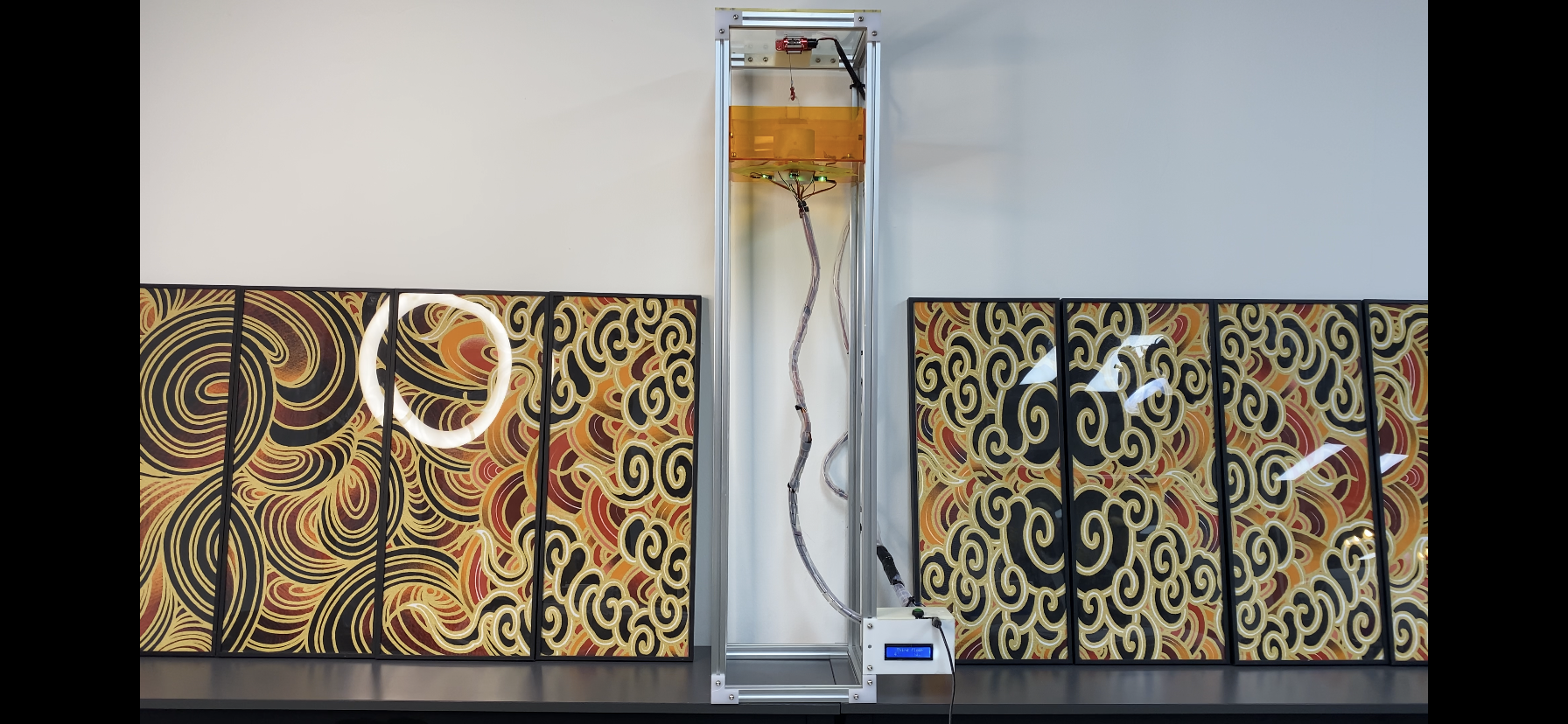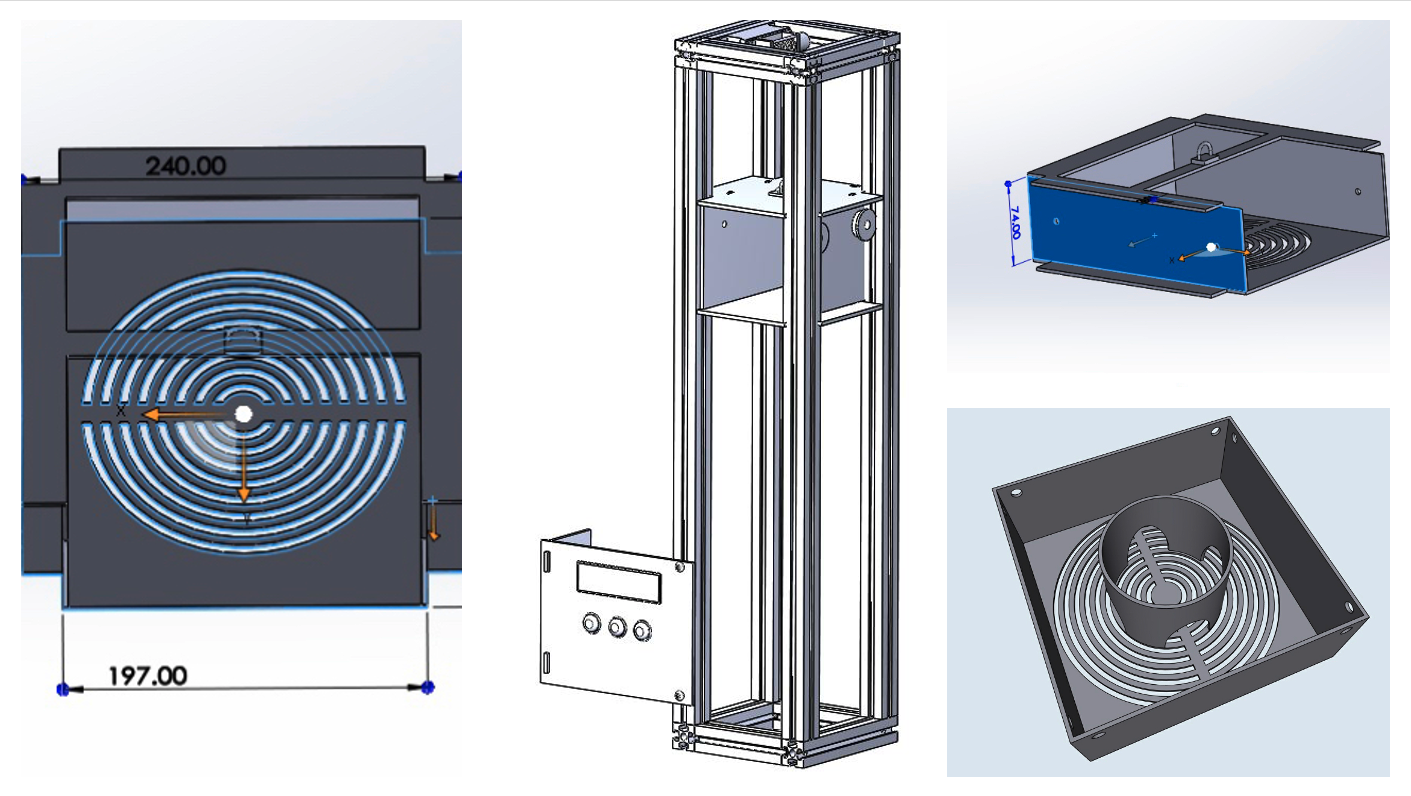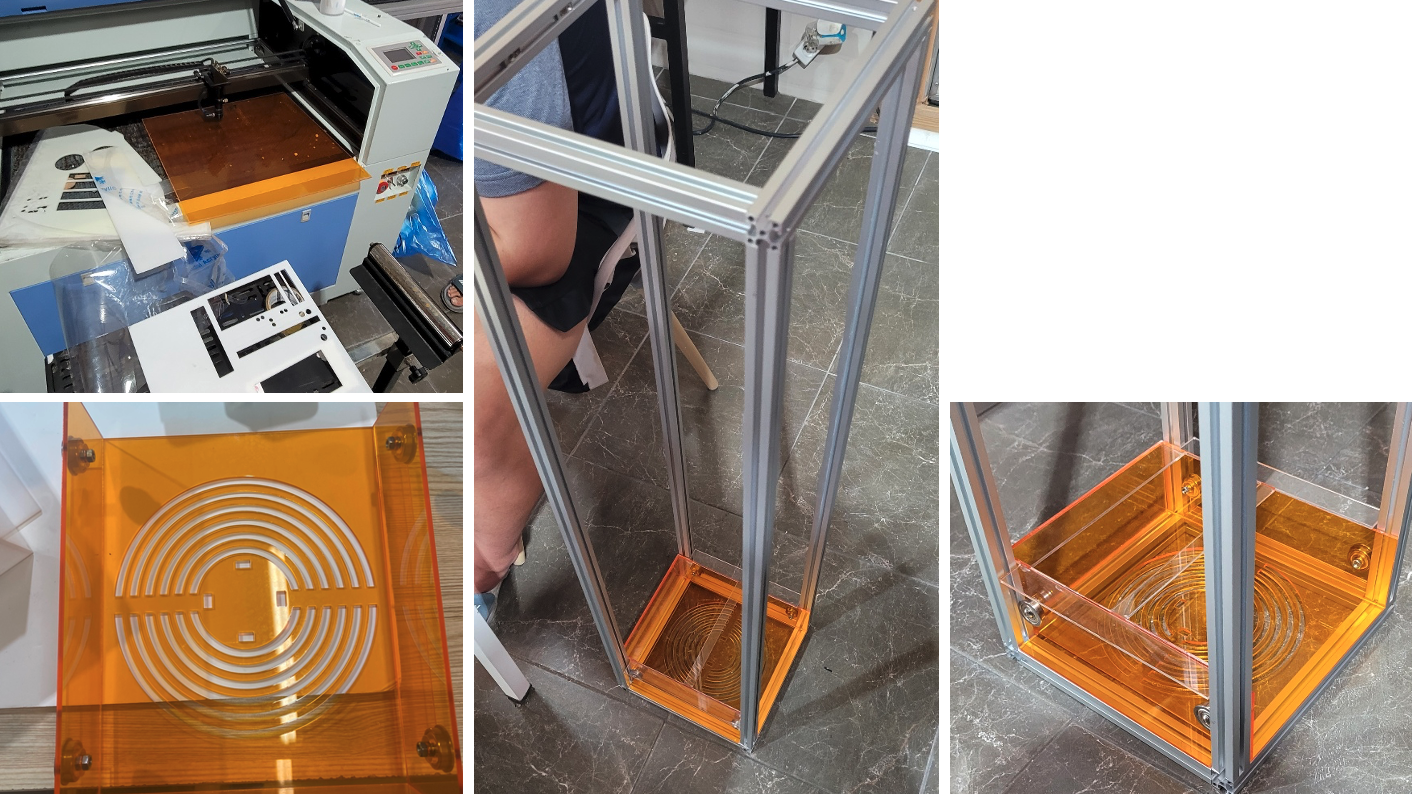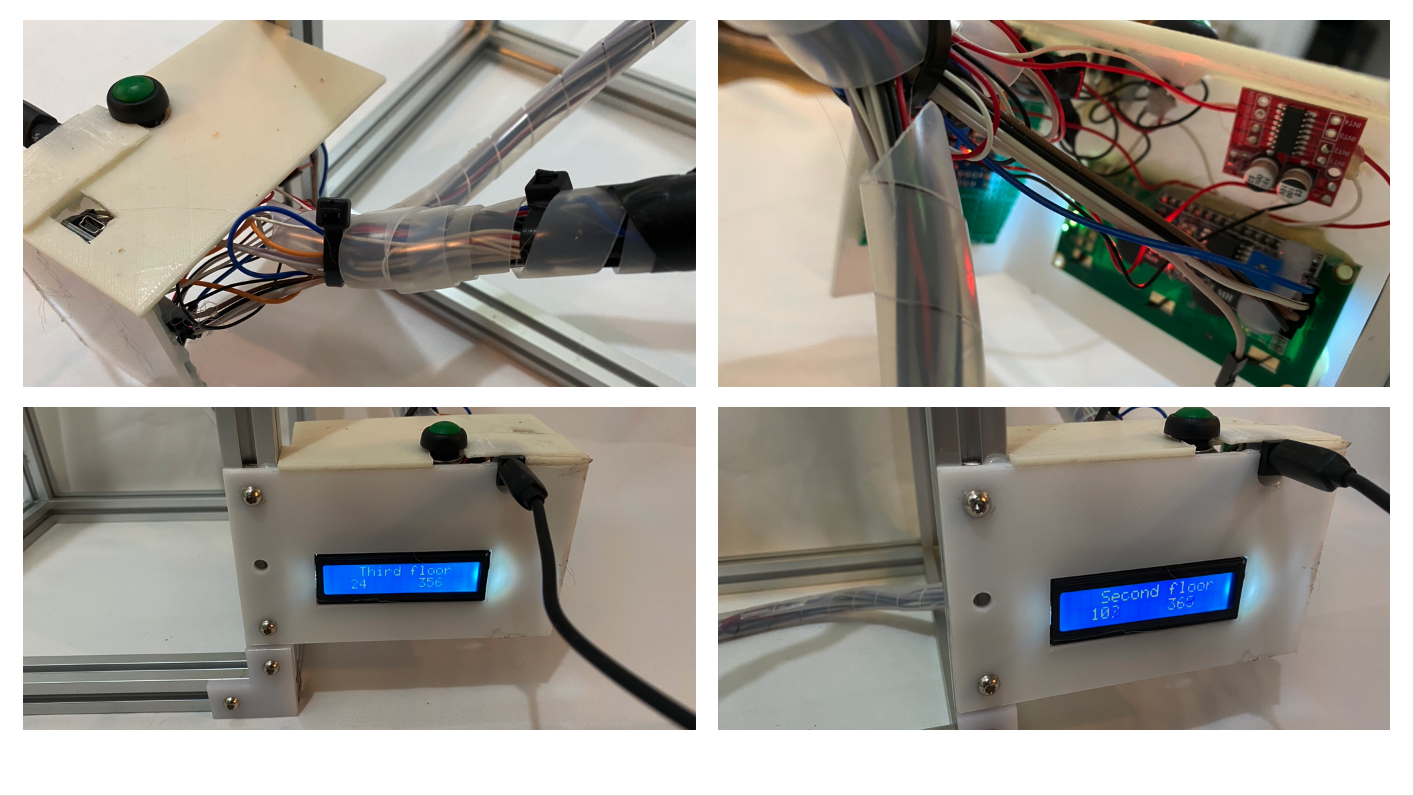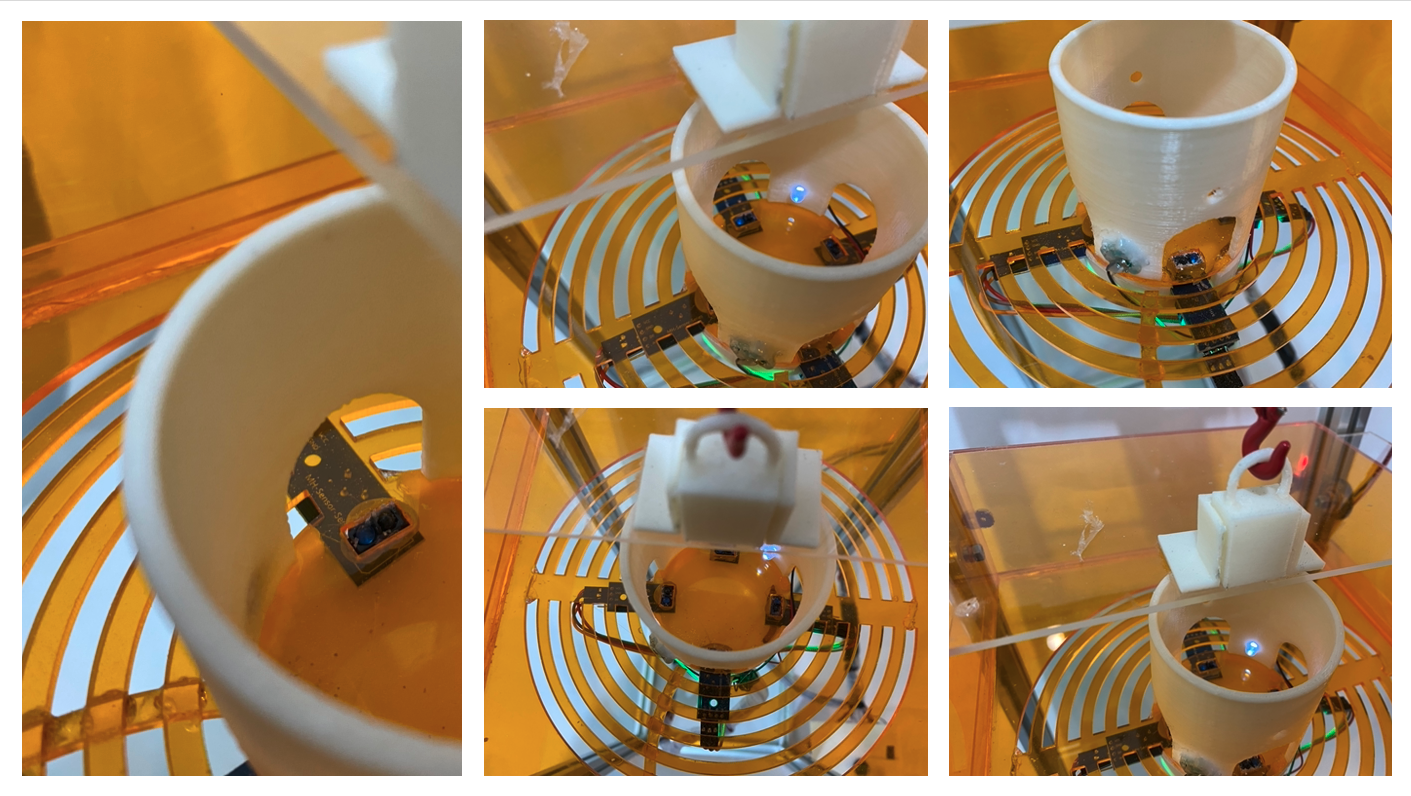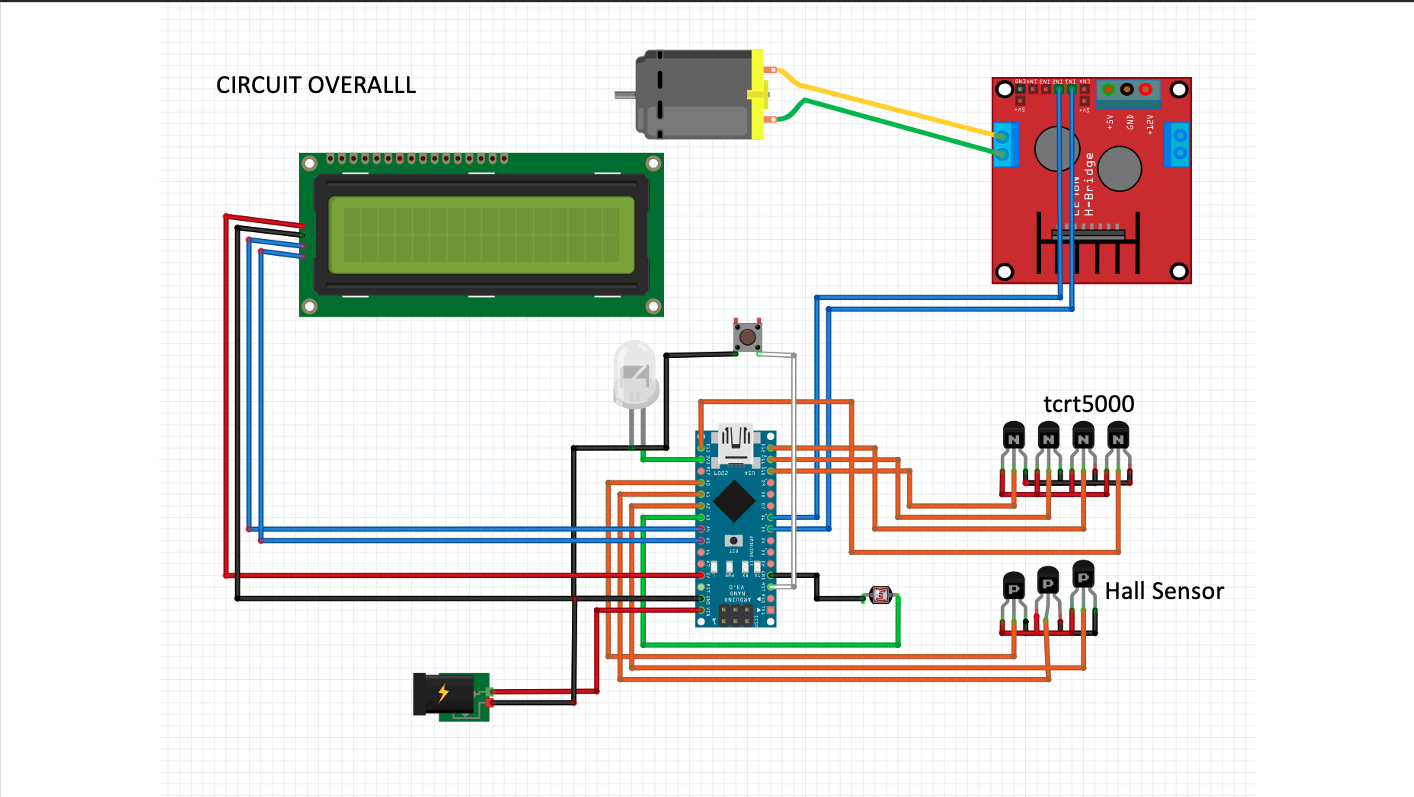Mama Jai's Farm
Mama Jai makes great food and saves the planet. "Eat bugs and stay healthy. We can do it"
produced by: Jaikwon Myung
Introduction
Wriggling changes our lives. Mama Jai's farm system begins with the idea of the future food. The BBC reported that Dr. Costas Bellis of the University of Leeds wrote a paper in 'Science'(July 2020), by 2040, humans will produce 1.3 billion tonnes of plastic. Humankind has to prepare for the food shortage that may come from environmental issues.
Recently, larvae of brown mealworm beetles are emerging as a new future food. They can consume about a pill a day of plastic and their powerful bacteria can purify and release harmful substances. This is a considerable key resource that can effectively reduce the tons of environmental waste produced by humans in the future. This mealworm also suggests that it may become an essential insect for our lives.
I grow the mealworms on my machine. I will eat them. Eating a mealworm is not savage, but it is our future. People should not consider it as a bizarre action.
If this performance reminds us about the environment and nature pollution, eating insects may not happen in the future.
Concept and background research
"Lift is not a machine that simply moves vertically up and down. It contains the ideal, sustainable future ecosystem. The lift can solve the human waste with an eco-friendly system and return it to human food."
I have a huge interest in various events that humans will face in the future.
Many scientists and futurists predict the future earth as either hopeless or hopeful. For example, unpredictable catastrophes such as global warming, viruses, and ecosystem destruction can destroy people's lives. On the other hand, human beings may overcome and continue the splendid history of the mankinds.
Last January, at New Cross Station, I read an article about bugs that could eat plastics.
As I knew plastics are indecomposable, and they accumulate to cause marine and earth pollutions, it was an interesting article for me.
"Super Mealworm" will greatly help to improve the global environmental problem by eating micro-plastics or styrofoams. 'Mama Jai's Farm' is a lift-type breeding system developed to raise plastic-eating insect "Super Mealworm". This breeding machine identifies the types of insects' evolution patterns with several types of sensors. Also, the layers move according to the evolution level to create separated breeding environments.
Mealworms are rich in protein. It can be a creative idea if you grow them well to replace food and save the planet.
I immediately wanted to use this idea to make people reconsider about the pollutions.
The initial concept was to create an automated smart farm with an automated temperature, humidity, and feeding controller.
To learn how to raise the mealworms, I visited the mealworm farm and learned the breeding system.
However, if I just develop this machine, people will consider this as just a simple technology development. I knew that developing a machine itself lacks artistic meaning. Therefore, I decided to create a mealworm lift with a more avant-garde and unique function and form.
Typical smart farms focus on creating a good environment to raise crops in good condition. However, this innovative lift contains the system to classify the mealworm's three-step evolution levels. This system differentiates my breeding kit from others, as I applied the interaction system that can distinguish the organic's growth and evolution.
This prototype is for my performance. It is difficult to develop as a commercial device. However, as the device can explain the environmental issue - food shortage from plastic wastes - I eagerly looked forward to designing this creative device, which never exists in the world.
The primary goal of the device was to pretend the machine seems to be real with simple movements. It is not focusing on using specialized techniques or designs of real lifts.
The reason for creating an eating performance of the mealworm bred by myself is that I want to break the stereotype of savage and unpleasant act.
I heard the rumour about COVID-19, the reason of spreading virus was Chinese appetite of eating(bats), Even I’m Korean different country, I experienced the hatred words of racism too. I want to insist that I resist this abhorrence and racism, and people should get away from the stereotype.
No worries, The filming went through the safe condition. I used edible mealworms.
Technical
For the device, I researched several libraries. However, it was difficult to find a simple operation for the controlling interaction.
To solve this problem, I designed a new coding with separated Arduino examples.
It was difficult to operate appropriate sensors on typical stages. With a while clause, it was possible to simplify the operation of complicated circuit components. Another difficulty was prevention of the short from the overcurrent because of the multiple modules.
I chose the weights of the lifts to control all of the sensors within 9 volts, and to prevent the short, I applied the 5 volts adapter.
The lift contains three layers to let caterpillars, pupa, and adult mealworms live at their evolutionary level. Frameworks are done with aluminum profiles, interiors are finished with acrylics, and bearings on the four sides to lift the layers with motors. It is easy to observe the mealworms' revolutionary status as the inside of the lift is made of transparent acrylic. There is a feeding room is made with styrofoam in the center designed with a 3D printer. I used magnetic sensors to control the position of the lift. In this stage, taking the center of gravity was important as considering the load of the lift.
I built a lifting system using a reel-step motor purchased from Amazon (https://www.amazon.com/RC-Winch-Crawler-Climbing-Electric/dp/B07N86YZYD).
I installed the LCD monitors at the bottom of the lift to check the response of time and sensors. On the third floor, I installed switches for power certification of default. The LCD panel shows the changes of time (second) and sensors' changing values.
<Description of the operation of the work>
The sensors installed on each floor recognize the evolution status of the insects. When evolution happens, the lift moves to the lower floor.
"2nd floor - Caterpillar compartment" - Caterpillars will enter the feeding room to have food. Indication of the caterpillars evolve into pupae is when their movement disappeared. With four proximity sensors installed at the entrance of the feeding room, when there is no movement longer than one minute, the lift will move down.
"1st floor - Pupa compartment" – It is designed to let light sensors in the feeding room can detect the objects. When pupae become an adult again, they will enter the feeding room to have food. When they enter the feeding room, the illumination value changes and the lift goes to the ground floor, "Adult compartment". Proximity sensors are active only on the second floor, and the light sensors are working only on the first floor.
I used Fusion 360 to design the blueprint for laser cutting and 3D printing. For a more accurate design, I used the free reference model of https://grabcad.com/library. For other designs, I used iPad's CAD application, Sharpr 3D.
I skipped the caterpillar's evolution steps for the project's smooth video recording.
Self evaluation and Future development
I learned a lot about computational art and realized that I can apply it to various fields while studying this course for a year. Especially, I am fascinated with the physical computing I learned in Term 1 and Term 2. In addition, I feel strongly confident in expanding the spectrum of my work if I can connect the performance and the computational art.
At the 'OFF' exhibition, I presented “The PunkRockdown”. I designed the work to express the longing for the freedom of life as an international student who lost communication from COVID-19. I designed the work as a street performance with wearable gear.
For the coming final show, under the theme of an environmental issue and the future food, I designed an integrated earthworm-breeding machine that works with complex algorithms and various sensors.
Especially, this project's interaction elements are for insects to react, not to humans. Through this, my intention is to make people to consider my work as an observational micro-artwork.
The purpose of the work is to make people experience complex emotions by watching the video.
The video contains the imagination of future humankind suffering food shortage from plastic wastes, therefore eating plastic-decomposing bugs.
People often feel aversion to unfamiliar unpleasantness or barbarism. Especially in modern times, where there is no pursuit of savage meals, this may seem more bizarre. Such impact is very important to inform and raise awareness about the seriousness of environmental problems in the future.
However, I expect this perception changes in the future.
Even now, we are losing our fertile land with a lot of human waste. If this pollution continues in the future, we may end up losing food.
We should know the human’s brilliant development of science and technology makes us convenient, however, at the same time, it also threatens the marvelous land.
References
https://edition.cnn.com/2020/09/10/world/mealworms-bacteria-plastic-waste-c2e-spc-intl/index.html
https://www.forbes.com/sites/alexledsom/2020/04/04/edible-insects-most-likely-coming-to-european-supermarkets-soon/?sh=6c43e73a2f0e
Mealworms provide plastic solution
https://www.seafoodsource.com/news/aquaculture/south-korean-mealworm-producer-targeting-sharp-hike-in-production-by-2025
Lou, Y. et al. (2021) ‘Response of the yellow mealworm (Tenebrio molitor) gut microbiome to diet shifts during polystyrene and polyethylene biodegradation’, Journal of hazardous materials, 416, p. 126222. doi: 10.1016/j.jhazmat.2021.126222.
Edstrom, B. (2016) Arduino for Musicians. Oxford: Oxford University Press, Incorporated.
Hillis, Ken, Susanna Paasonen, and Michael Petit. Networked affect. MIT Press, 2015.
Scholl, K. and Moffatt, C. (2017) ‘Plastic waste sacks alter the rate of decomposition of dismembered bodies within’, International journal of legal medicine, 131(4), pp. 1141–1147. doi: 10.1007/s00414-017-1535-4.
Kundungal, H. et al. (2019) ‘Efficient biodegradation of polyethylene (HDPE) waste by the plastic-eating lesser waxworm (Achroia grisella)’, Environmental science and pollution research international, 26(18), pp. 18509–18519. doi: 10.1007/s11356-019-05038-9.
































































